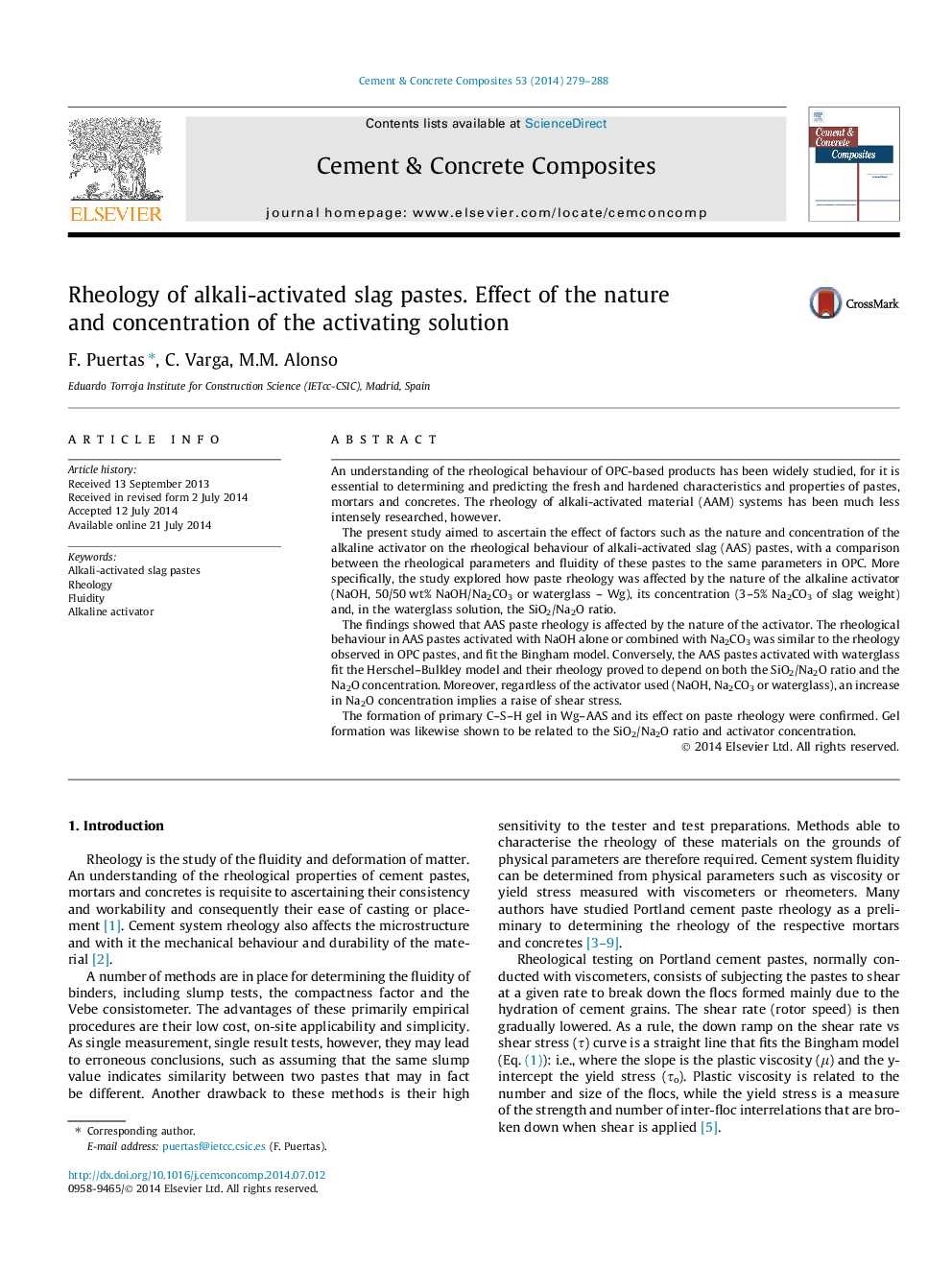| Article ID | Journal | Published Year | Pages | File Type |
|---|---|---|---|---|
| 1454565 | Cement and Concrete Composites | 2014 | 10 Pages |
An understanding of the rheological behaviour of OPC-based products has been widely studied, for it is essential to determining and predicting the fresh and hardened characteristics and properties of pastes, mortars and concretes. The rheology of alkali-activated material (AAM) systems has been much less intensely researched, however.The present study aimed to ascertain the effect of factors such as the nature and concentration of the alkaline activator on the rheological behaviour of alkali-activated slag (AAS) pastes, with a comparison between the rheological parameters and fluidity of these pastes to the same parameters in OPC. More specifically, the study explored how paste rheology was affected by the nature of the alkaline activator (NaOH, 50/50 wt% NaOH/Na2CO3 or waterglass – Wg), its concentration (3–5% Na2CO3 of slag weight) and, in the waterglass solution, the SiO2/Na2O ratio.The findings showed that AAS paste rheology is affected by the nature of the activator. The rheological behaviour in AAS pastes activated with NaOH alone or combined with Na2CO3 was similar to the rheology observed in OPC pastes, and fit the Bingham model. Conversely, the AAS pastes activated with waterglass fit the Herschel–Bulkley model and their rheology proved to depend on both the SiO2/Na2O ratio and the Na2O concentration. Moreover, regardless of the activator used (NaOH, Na2CO3 or waterglass), an increase in Na2O concentration implies a raise of shear stress.The formation of primary C–S–H gel in Wg–AAS and its effect on paste rheology were confirmed. Gel formation was likewise shown to be related to the SiO2/Na2O ratio and activator concentration.
